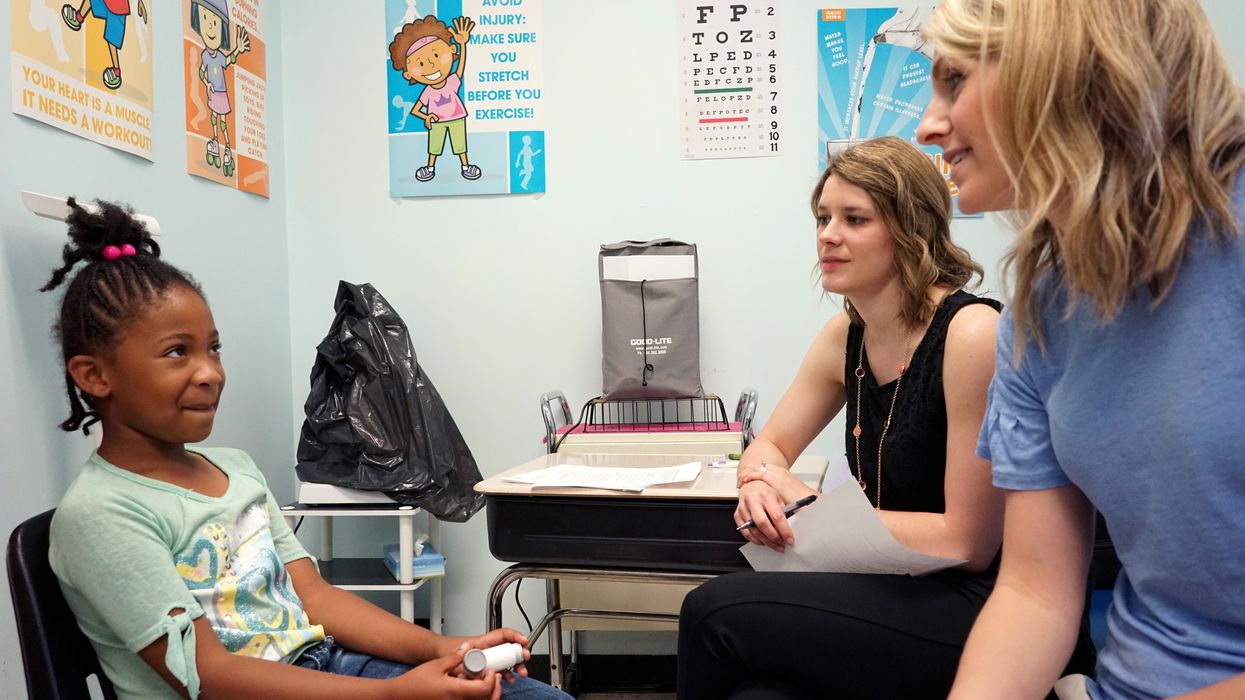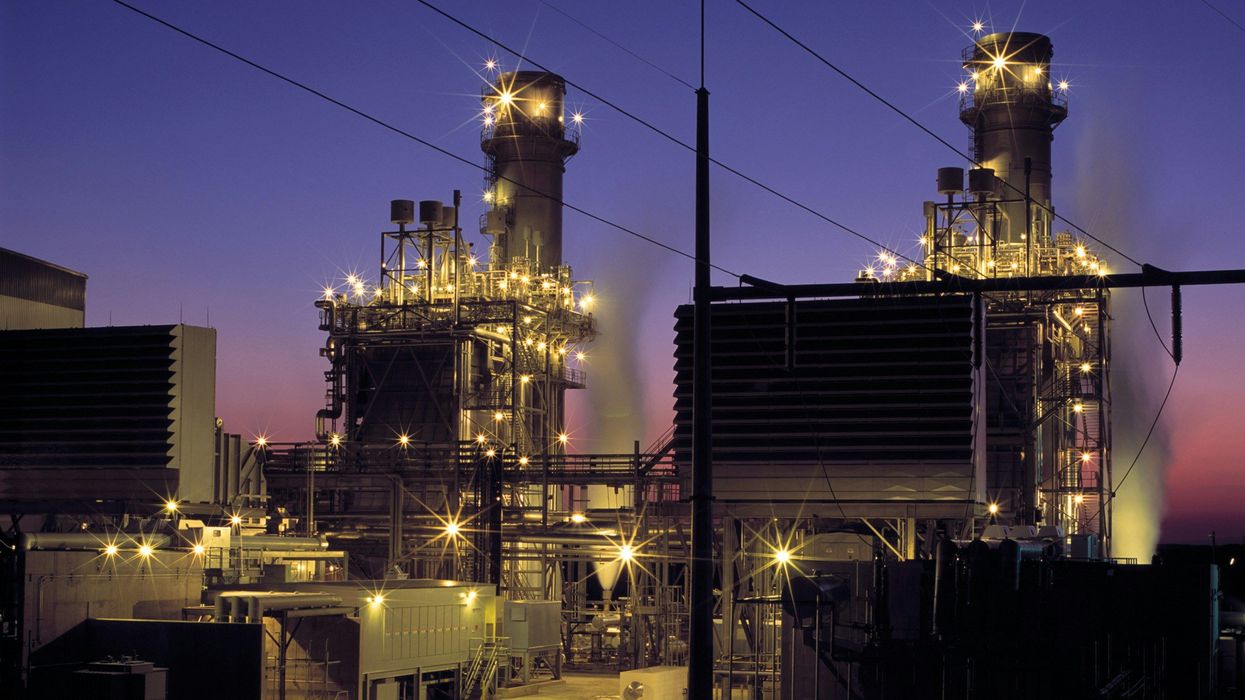Editor's note: This story is part of "Breathless," EHN's in-depth look at asthma in Pittsburgh and efforts to help children breathe easier.
PITTSBURGH — Last fall, twelve-year-old Savaughn Williams was thrilled to start playing on the little league football team in Clairton, Pennsylvania, a town 15 miles south of Pittsburgh.
Savaughn's mom, Collette Williams, was initially excited that he wanted to play, too. Football is a big deal in Clairton: The town's high school team, the Bears, has won the state championship for its class four out of the last 10 years. In 2012 they set the state record for most consecutive wins after playing 60 straight games without a loss. "Go Bears" signs are plastered all over town.
But soon after the start of the season, Collette decided to pull her son off the team.
One chilly afternoon Savaughn had a severe asthma attack during practice. Collette managed to get it under control without a trip to the ER, but when he was little, she had to take him to the ER for asthma attacks nearly once a month. Cold air tended to exacerbate his breathing problems, and Colette feared that if he kept playing football, they'd fall back into that pattern.
"Some days he has good days and he can keep up with other kids, but some days I'll have to make him slow down and catch his breath a little bit," Collette tells EHN. "I try to explain to him that if he starts getting winded and doesn't catch it in time, he could have an attack that could cause him to stop breathing, and he could even pass away from it. He kind of gets it, but I don't think he fully gets how serious his asthma is, so I have to keep telling him."
She adds "I'm scared one day when he does finally get it, it might be too late if I'm not around."

Savaughn isn't the only kid in Pittsburgh who regularly has trouble catching his breath. County data is lacking, so last year pediatricians set out to put a number on the region's asthma problem—and the results were striking: A study of more than 1,200 elementary school students in eight of the county's most polluted school districts found that 22 percent of kids tested have asthma. At the state level, just 10 percent of kids have asthma. The national average is 8 percent.
In Clairton the asthma rate in the study was 18 percent. In some of the 14 schools included in the study, such as Fairless and Shaffer elementary schools (both of which have since been closed by the district), the rates spiked to more than 30 percent of kids examined.
Asthma has many potential causes and triggers. Genetics can play a role, along with things like allergies and tobacco smoke—but one major trigger stands out in this region: Allegheny County has some of the worst air quality in the country. It was one of only 10 counties in the nation to receive all F's on the American Lung Association's 2018 air quality report card, and Pittsburgh was one of just six regions in the country where year-round particulate pollution (tiny, airborne particles of chemicals that cause heart and respiratory problems when inhaled) increased rather than decreased since the last report.
Dr. Deborah Gentile, a member of the Pediatric Alliance and former director of clinical research in the Division of Allergy, Asthma and Immunology at Allegheny Health Network, led the research aimed at assessing the severity of Pittsburgh's childhood asthma epidemic.
Gentile's study adjusted for factors like economics, race and smoking, and still found consistently higher rates of asthma among kids living close to the region's big industrial polluters. Those places included Clairton, which is home to Clairton Coke Works, the nation's largest manufacturer of coke (a key material in steel manufacturing); Colfax, which is downwind of the Cheswick power station; and Braddock, home to the Edgar Thomson Steel Works mill.
Those three industrial sites are among the region's largest emitters of both particulate matter pollution and airborne toxics—such as hydrogen sulfide, phenol, ammonia, and benzene. Much like particulate matter, these toxics can damage the respiratory system and impair children's lung function.
Gentile's research also revealed that asthma was uncontrolled in nearly 60 percent of the children with the disease who she examined. Nationally, the rate of uncontrolled asthma in kids is 38 percent, according to the Centers for Disease Control and Prevention. State-wide it's 27 percent.
People with "uncontrolled" asthma generally experience wheezing and shortness of breath, or coughing or extra difficulty breathing at night more than twice a week. Using rescue medications like an albuterol inhaler more than twice a week also indicates that a person's asthma is uncontrolled.
Uncontrolled asthma is often the result of a lack of diagnosis and subsequent lack of treatment.
The Allegheny County Health Department collects data on asthma prevalence in kids, but those numbers, which are reported by school nurses, are based on students (or their parents) either stating that they have asthma or keeping a rescue inhaler at school. This method misses students who've never received a diagnosis. In contrast, Gentile's study systematically evaluated students for symptoms, first through a questionnaire-based screening, then through a full work-up and diagnosis by a clinician using standardized breathing tests.
For nearly 13 percent of Gentile's study participants, her testing led to their first asthma diagnosis.
"I've actually met kids that are only breathing at about a third of the capacity they should be," Gentile says, "and that's how they live. It's scary."
For those kids, living with uncontrolled asthma puts them at risk of missing school, obesity, and even permanent damage to their airways and lungs.
"There are still a lot of misconceptions that asthma is an annoyance you have to put up with," Gentile says. "We need to raise awareness that this is not acceptable. Even though we can't cure asthma yet, controlling symptoms in the meantime is critical for long-term health, especially in kids."
Damaged airways, emergency room visits, missed school and obesity

US Steel's Clairton Coke Works in Clairton, PA. (Credit: The Breathe Project)
According to the American Lung Association, the average asthma-related hospital stay in Pennsylvania is 3.22 days long, and the average cost is more than $26,000. But the consequences of living with uncontrolled asthma can extend far beyond the cost.
"Asthma death is of course the worst possible outcome for uncontrolled asthma," explains Kevin Stewart, the Mid-Atlantic Director of Environmental Health at the American Lung Association.
Asthma and other chronic lower respiratory disease like Chronic Obstructive Pulmonary Disease (COPD) are the third leading cause of death in the U.S. and in Pennsylvania. Nationwide, asthma deaths are decreasing, but the most recent data available suggest they've been on the rise in the state in the last decade: According to Pennsylvania's strategic asthma plan, the state had 126 asthma deaths in 2010, 129 deaths in 2011, and 145 deaths in 2012.
Living with uncontrolled asthma can also have serious, long-term health impacts for kids, whose lungs are still developing through their teen years.
"Some patients experience irreversible airway remodeling as a result of uncontrolled asthma," Gentile says. When airways are remodeled as a result of uncontrolled asthma, the breathing tubes become damaged with scar tissue. When this occurs in kids, they may never achieve full lung function.
"We don't really know why this happens in certain patients but not others," Gentile says. "Some people think certain patients are more genetically prone to permanent damage in their breathing tubes."
As a follow-up to her research, Gentile is now treating elementary school students in the region, including Savaughn Williams, through in-school asthma clinics. Based on their regular clinic visits and testing, Gentile believes Savaughn may have some of that scarring.
"We've been following him for quite some time now because he's one of the more severe case," Gentile says. She explains that normally, patients' breathing test numbers improve following consistent treatment, but that Savaughn's numbers haven't improved as expected, despite his disease being controlled. "When we adjusted for his lung size, it actually shows that he likely has sustained permanent damage to his lungs from his asthma."
Related: Is there a connection between Pittsburgh's high rates of asthma and autoimmune disorders?
Collette was caught off guard by the diagnosis. "I thought he was doing pretty good," she says, "so to get that kind of news is pretty devastating. He's only 12."
There a few other factors that could have contributed to Savaughn's low lung function. He was born 26 weeks premature and spent the first three months of his life in the hospital on a respirator. Soon after coming home, he got sick with respiratory syncytial virus (RSV), which resulted in several more weeks of hospitalization. Collette was told he only had a 50 percent chance of survival.
When discussing whether Savaughn's premature birth could have played a role in his lung development, Gentile notes that exposure to air pollution during pregnancy has been linked to both premature births and to having children who develop asthma.
Despite his limited lung function, Savaughn is doing much better these days thanks to Gentile's clinic. He plays baseball and says he's usually able to run around at recess as long as he's been using his medication correctly. But he still sometimes misses school due to his disease—and he's not alone in that.
Asthma is the leading cause of absenteeism among elementary school students nationwide. American kids with asthma missed about 13.8 million days of school in 2013, and nearly half of all kids with asthma miss one or more school days each year because of lost sleep due to wheezing or ER visits to treat asthma attacks.
Chronic absenteeism has been shown to negatively impact students' lifelong learning and achievement, as well as contribute to social, emotional and behavioral issues. In 2011-2012, nearly a quarter of Pittsburgh Public School students were chronically absent, meaning they missed at least 18 days of school. Absenteeism is enough of a problem countywide that in 2016, the Department of Human Services expanded a "Focus on Attendance" pilot program aimed at reducing those numbers to all 43 school districts in the county.
When kids stay home from school due to asthma, their parents often have to skip work to take care of them, which results in lost productivity. The entire health care cost of asthma and asthma-related absenteeism from work in Pennsylvania was estimated to be $1.7 billion in 2010. Research has shown that the introduction of asthma intervention programs like Gentile's can significantly reduce absenteeism for both students and parents.
"As far as I can tell, attendance of students in the asthma program has significantly improved primarily due to the fact that students are able to get their inhalers and actually use them if needed," Maria DiCarlo, the school nurse at Clairton Elementary, tells EHN.
Kids with uncontrolled asthma also tend to sit out gym class and sports. The lack of exercise makes kids more susceptible to childhood obesity, and can lead to poor heart health.
"These kids should be active," Gentile says. "There's a misconception that kids with asthma should be on the bench. But today it would be very unusual if we couldn't get a kid to the point where they can do whatever physical activity they want with the right medications."
Studies about the long-term health impacts of asthma remain few and far between compared to other chronic diseases, so there may also be other, unknown consequences of leaving asthma untreated.
"We have lots and lots of studies to look to when it comes to likely outcomes for things like cardiovascular disease," Dr. Sally Wenzel, severe asthma expert and Director of the University of Pittsburgh's Asthma Institute, tells EHN. "We have much less data when it comes to asthma… and it's a highly variable disease."
Wenzel notes that some kids with severe childhood asthma grow out of it permanently, while for others it's a lifelong disease. For some, asthma goes away but then comes comes back, sometimes even more severely, later in life. Ultimately, she says, "We still don't really know why."
“Pittsburgh patients are far and away the sickest”

Students walk past a mural depicting air quality issues in the halls of Clairton Education Center in Clairton, PA. (Connor Mulvaney/EHN)
In a city that's branded its post-industrial comeback as being all about "eds and meds," why are so many children living with an unchecked, life-threatening disease?
"There may have been some reluctance in Pittsburgh and the Western Pennsylvania region to talk much about respiratory disease in a place where there's a legacy of industrial pollution, but those industries have also been an economic driver in the region," says Dr. Wenzel. "There's always this conflict between health and economics here that seems to make it easy not to work too hard on things that impact air quality."
Asthma can also go uncontrolled due to improper use of medications or lack of access to them. Gentile speculates that Pittsburgh's dearth of reliable public transit could be making it difficult for low-income families in areas with high levels of air pollution to get to their doctors and pharmacies regularly.
We could also be seeing higher rates of uncontrolled asthma in Pittsburgh because asthma tends to be not only more prevalent here, but also more severe, which requires more complex treatment to manage.
Wenzel is part of a nationwide clinical research network on asthma created by the National Heart Lung and Blood Institute, which has been collecting data on asthma since 2009. For the last three years, she's been working on a project related to severe asthma that includes patient data from Madison, Wisconsin; Wake Forest, Arizona; St. Louis; Boston; San Francisco; Cleveland; and Pittsburgh.
"Over three years, Pittsburgh patients have consistently been far and away the sickest among the seven sites," Wenzel says. "Pittsburgh asthma patients have twice the rates of exacerbation, lower lung function, worse symptoms and more use of corticosteroids."
Related: Coke plant pollution linked to "asthma epidemic" in Pittsburgh-area elementary school
She notes that this may in part be due to referral bias, since she's known as an expert on severe asthma.
"But the difference is so striking," she adds, "that anytime we do a network-wide study we actually have to pull out the Pittsburgh group and control for that data."
She adds that more study is needed, and that she'd like to go back through the data to see whether there are clusters of patients with severe asthma in particular Pittsburgh neighborhoods.
"But," she says, "my impression is that they're fairly distributed throughout the region."
For kids with severe asthma, getting the disease under control can be life-changing. For some parents, that means moving them to places with cleaner air.
"We had a patient enrolled here with a child who had very, very severe asthma, and their family literally lived across the street from the coke works. They were fortunate enough to be able to move out," Gentile says. She reiterates that although asthma has many triggers, removing major, known triggers can only be helpful. Prior to leaving, she says, "this child was basically in the emergency room every week, very sick with his disease."
Collette is considering trying to do the same for Savaughn. "When my daughter graduates high school next year, I'm thinking about moving him out of state," she says.
"The coke plant is a big part of that. I figure if I move out of the area and give him fresher, normal air, maybe he'd be able play like other kids."
- Coke plant pollution linked to “asthma epidemic” in Pittsburgh-area ... ›
- Air pollution exposure during pregnancy linked to reduced lung function in kids: Study - EHN ›
- PFAS and phthalate chemical exposure early in life may hamper kids’ lungs - EHN ›
- Air pollution causes up to 33 million ER visits for asthma annually - EHN ›

















